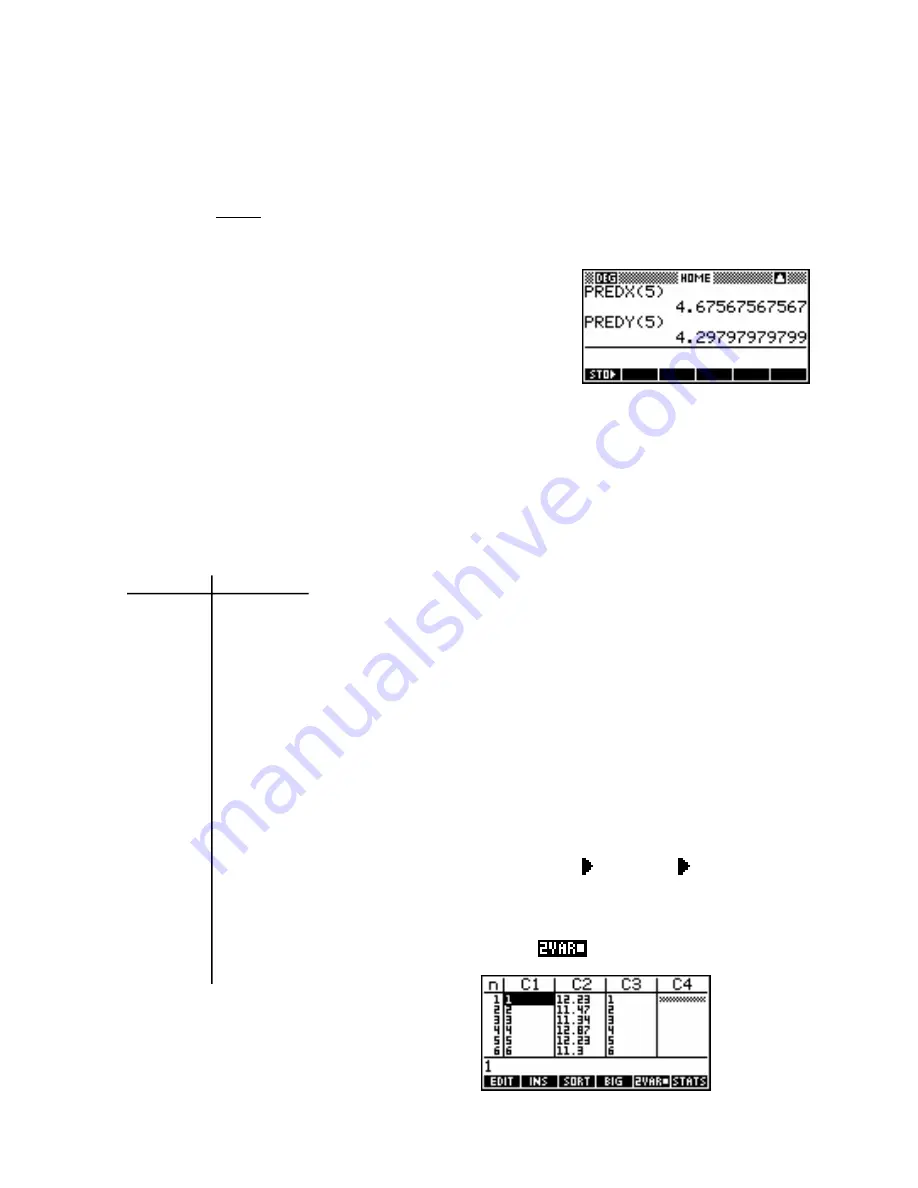
While the value of
S
xy
will not change if the roles of independent and dependent columns are reversed, the
S
2
value of
( )
on the bottom means that this formula will give a different value if you change which column is
x
regarded as x (independent) and which as y (dependent). This different value for
b
will also mean a different
value for
a
and these will not be the values which would result from the simple inverse function.
If you truly wish to predict X values in the sense of the second interpretation, then you should change to the
SYMB
view and enter a new data set
S2
which uses
C2
and
C1
in reversed order, avoiding the need to re
enter the data.
Now use
PREDY
for the second fit line rather than
PREDX
. As you can
see in the screen below, the result of
PREDX(5)
with
C1
vs.
C2
is not
the same as
PREDY(5)
using
C2
vs.
C1
.
Assigning rank orders to sets of data
It is occasionally handy to be able to assign rank orders to a set of data. You might be running a Quiz
Competition Night, or recording times for the 100 meter sprint, but in either case it is handy to be able to sort
the data into descending order and assign rankings. This is easy for small sets of data, but becomes difficult
for larger sets.
Competitor
Time
12.23
11.47
11.34
12.87
12.23
11.30
10.51
11.34
11.46
12.34
12.23
11.50
12.01
11.97
12.05
12.87
12.02
12.52
11.37
10.75
1
2
3
4
5
6
7
8
9
10
11
12
13
14
15
16
17
18
19
20
Let us assume a set of 20 competitors in the 100
meter sprint, with times recorded to two decimal
places, and competitors numbered 1 to 20. Suppose
that the results were as shown left.
Enter the competitor numbers as column
C1
and the
times in column
C2
.
I’m going to assume here that the competitor numbers
also run from 1 to 20 but this may not be the case. In
addition to this, put the numbers 1 to 20 into column
C3
also. They can be a bit tedious to type in for lists
longer than 20, so you could use the expressions
MAKELIST(X,X,1,20,1) C1
and
C1 C3
to
shortcut the process, replacing 20 with whatever is
needed.
Make sure that the
option is selected.
The result should look like this…
137






























